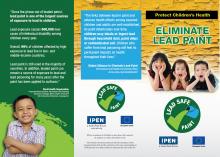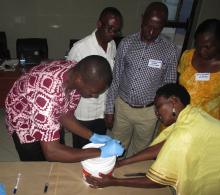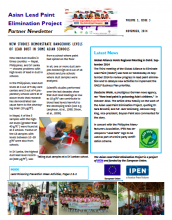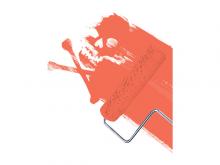International Lead Poisoning Awareness Week 2014
Lead paint is a major source of potential lead poisoning for young children. The International Lead Poisoning Prevention Week of Action, co-led by the World Health Organization (WHO)and United Nations Environment Programme (UNEP), was established to raise awareness of the widespread availability of lead paint.





